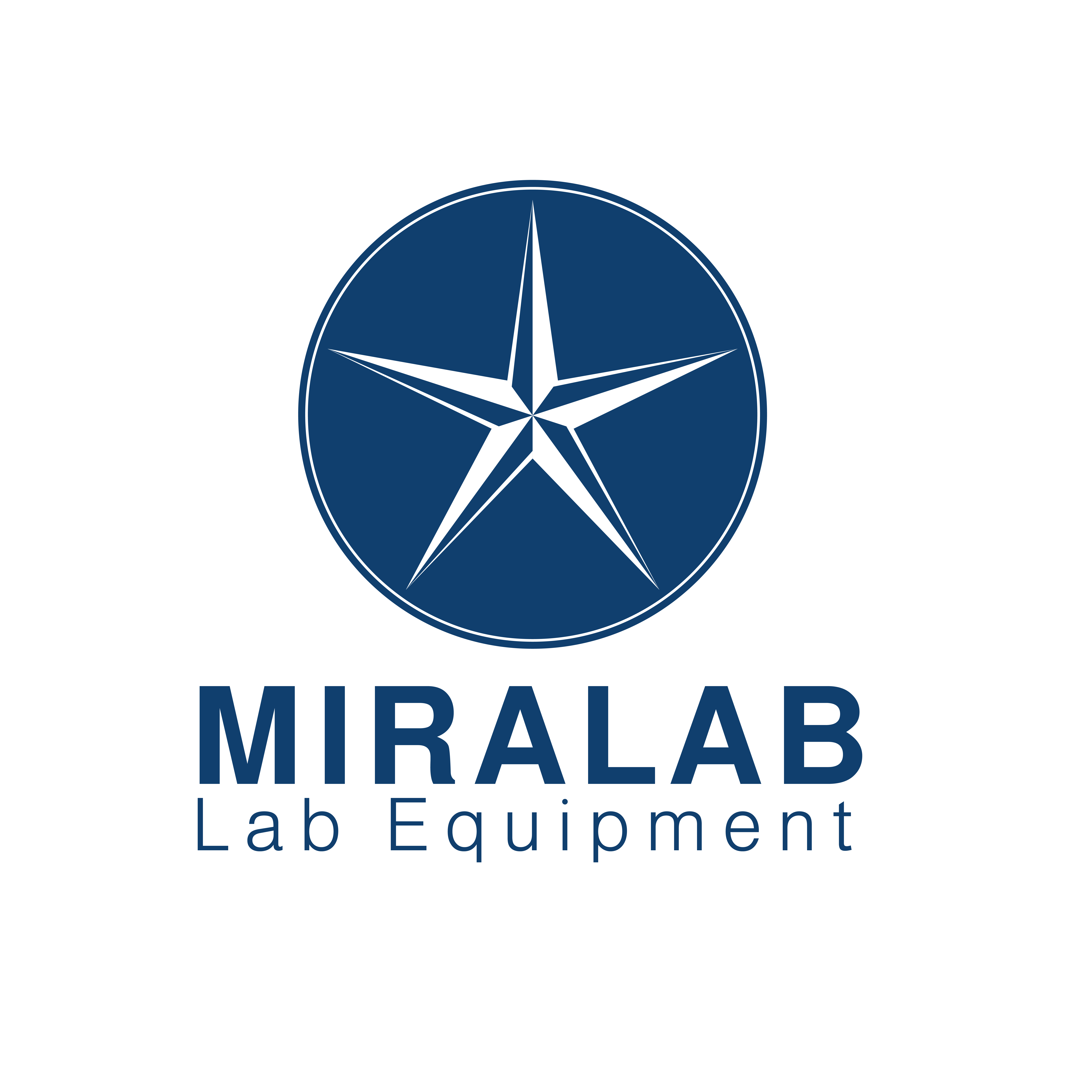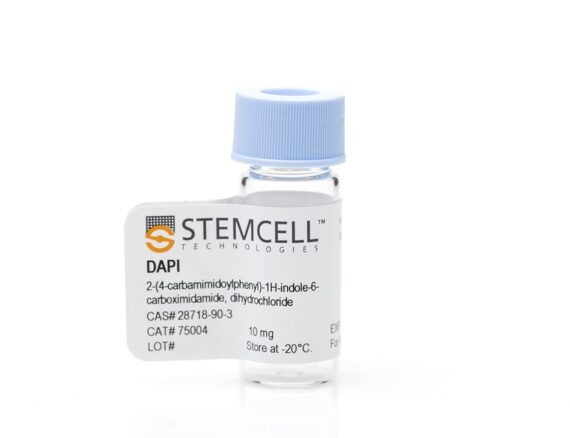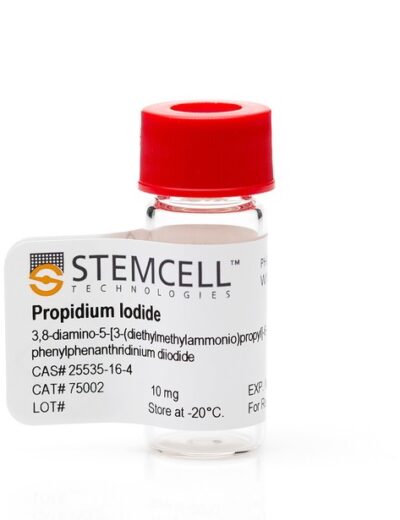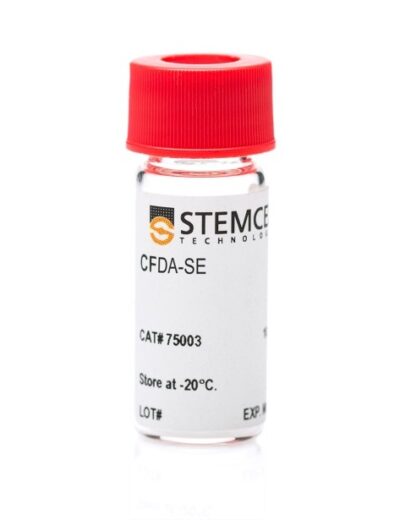DAPI (Hydrochloride) DNA-labeling dye

Overview
DAPI (4′,6-diamidino-2-phenylindole dihydrochloride) is a blue-fluorescent dye that binds to AT-rich regions of double-stranded DNA. Binding is accompanied by an ~20-fold enhancement in fluorescence, which is directly proportional to the amount of DNA present and has an emission maximum at ~454 nm. The complex is stable for several hours at room temperature and over the pH range 4 – 11. DAPI can also bind to RNA, evidently through AU-selective intercalation, though the DAPI/RNA complex emits at a longer wavelength (500 nm) and with only an ~20% increase in quantum yield. DAPI has been widely used as a counterstain to detect nuclei in multicolor fluorescence applications, where its blue fluorescence vividly contrasts with red, yellow, or green fluorescent dyes used to stain other structures. It has also been used for studying apoptosis (at low concentrations the dye is excluded from live cells but penetrates dead or damaged cells), and in quantitative DNA assays, in situ hybridization, chromosome sorting and mycoplasma detection assays.
Application: Flow Cytometry; Immunocytochemistry
Area of Interest: Neuroscience; Immunology; Stem Cell Biology; Epithelial Cell Biology
Chemical Formula: C₁₆H₁₅N₅ · 2HCl
Molecular Weight: 350.3 g/mol





